Requirements for surveillance hard drive
When it comes to setting up a surveillance system, choosing the right hard drive is crucial. Surveillance systems continuously record and store high-definition video footage, requiring a hard drive that can handle the demanding workload. In this section, we will discuss the key requirements to consider when selecting a hard drive for your surveillance system.
Table of Contents1. Storage Capacity
One of the primary considerations for a surveillance hard drive is its storage capacity. The capacity determines how much video footage can be stored before the drive becomes full and starts overwriting older recordings. The required storage capacity depends on factors such as the number of cameras, video resolution, frame rate, and the desired retention period for the footage.
Calculate the approximate storage capacity needed by considering the following factors:
-
Number of cameras: Determine the number of cameras in your surveillance system and their recording settings (resolution, frame rate, and compression).
-
Recording duration: Decide on the desired retention period for the recorded footage. Typically, it is recommended to retain footage for at least 30 days.
-
Data rate: Estimate the average data rate per camera based on the resolution and frame rate. Multiply this by the number of cameras to determine the total data rate.
By multiplying the data rate by the recording duration, you can obtain an estimate of the required storage capacity for your surveillance hard drive.
2. Performance and Workload Rating
Surveillance systems generate a continuous stream of data, which puts significant stress on the hard drive. It's essential to choose a hard drive specifically designed for surveillance applications. Look for the following performance-related features:
-
Workload rating: Surveillance hard drives typically come with a workload rating specified by the manufacturer. This rating indicates the maximum workload the drive can handle per year. Select a drive with a workload rating that matches the demands of your surveillance system.
-
Continuous operation: Surveillance hard drives are built to operate 24/7 without interruptions. They are designed to handle the constant read and write operations required for recording and playback of video footage.
-
Data transfer rate: A higher data transfer rate ensures smooth recording and playback of high-definition video. Look for hard drives with fast data transfer rates to minimize buffering and latency issues.
3. Reliability and Durability
Since surveillance systems are expected to operate continuously, reliability and durability are critical factors when choosing a hard drive. Consider the following aspects:
-
MTBF (Mean Time Between Failures): MTBF indicates the average time a hard drive can operate before encountering a failure. Look for surveillance hard drives with high MTBF ratings to ensure long-term reliability.
-
Error recovery control: Surveillance hard drives often include features that minimize data loss in case of power outages or disruptions. These features help to recover data and maintain the integrity of the recorded footage.
-
Vibration and shock resistance: Surveillance hard drives are designed to withstand the vibrations and shocks that may occur in a surveillance environment. Look for drives with built-in shock resistance technology to ensure reliable performance.
>4. Data Retention and Data Recovery
In a surveillance system, it's essential to have reliable data retention and recovery mechanisms in place. Consider the following factors:
-
RAID support: Implementing a RAID (Redundant Array of Independent Disks) configuration can enhance data redundancy and protect against data loss. Look for surveillance hard drives that support RAID configurations if you require an additional layer of data protection.
-
Data recovery services: Some surveillance hard drive manufacturers offer data recovery services in case of drive failures. These services can help retrieve data from a failed drive, ensuring that important video footage is not lost.
5. Compatibility and Integration
Ensure that the surveillance hard drive is compatible with your surveillance system. Consider the following:
Interface: Check if thesurveillance hard drive has the appropriate interface to connect to your surveillance system. Common interfaces include SATA (Serial ATA) and SAS (Serial Attached SCSI).
-
Compatibility with DVR/NVR: Ensure that the hard drive is compatible with your Digital Video Recorder (DVR) or Network Video Recorder (NVR) system. Check the system requirements and recommendations provided by the manufacturer to ensure compatibility.
-
Form factor: Verify that the hard drive's physical form factor matches the requirements of your surveillance system. Common form factors for surveillance hard drives include 3.5 inches and 2.5 inches.
-
Integration with surveillance software: Some surveillance hard drives offer integration with surveillance software, providing additional features such as advanced analytics, motion detection, and remote access. If you require these functionalities, check if the hard drive is compatible with the surveillance software you plan to use.
6. Power Efficiency
Power efficiency is an important consideration, especially for surveillance systems that operate continuously. Look for surveillance hard drives that are designed to minimize power consumption without compromising performance. Energy-efficient drives can help reduce operating costs and environmental impact.
7. Warranty and Support
Finally, consider the warranty and support options provided by the hard drive manufacturer. Look for surveillance hard drives that come with a warranty period that suits your needs. Additionally, check if the manufacturer offers reliable customer support and technical assistance in case of any issues or concerns.
There are several detail requirements of hard disk drive (HDD)
1. The disk had better be the one used for survilliance, not for computer use.
Here is reason.
If you need buy a hard drive by yourself, please don't buy hard drive for desktop computer.
The hard drive for desktop has the word "desktop" in its description.
The hard drive for DVR NVR has the word "surveillance" in its description.
If you know the model of hard drive, search it in google to check it is desktop or surveillance use.
2. The type should be SATA. SATA2(3GB/s) or SATA3(6GB/s)is recommened. If you connect a USB stick or drive to USB port of DVR, DVR can back up video from internal hard disk drive to USB stick, but can't record to USB stick directly.
3. We recommend 5400 RPM.
4. Size is 3.5”.
5. The capacity should be less than or equal to recorder's maximum capacity.
To know the max capacity of hard drive you can use on some models, you need to reach the support with the model of the NVR/Recorder.
Below are reasons why desktop hard drive can not be used in DVR NVR.
1. The current to power on desktop hard drive is bigger than surveillance hard drive.
Therefore, if you install desktop hard drive into DVR NVR, DVR NVR may be not able to power on hard drive and make it run.
2. The desktop hard drive is designed for 8 hours everyday use, not for 24 hours every day use.
Therefore, if you install desktop hard drive into DVR NVR, hard drive may be broken after several weeks 24 hours running.
Conclusion
Selecting the right hard drive for your surveillance system is crucial for reliable and efficient operation. Consider the storage capacity, performance and workload rating, reliability and durability, data retention and recovery, compatibility and integration, power efficiency, and warranty and support when making your decision. By choosing a surveillance hard drive that meets these requirements, you can ensure seamless recording, storage, and retrieval of video footage, enhancing the overall effectiveness of your surveillance system.




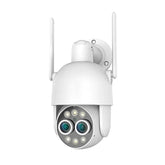
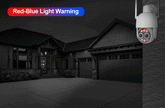




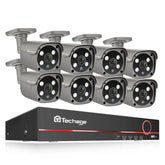

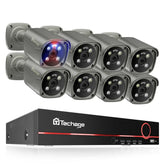



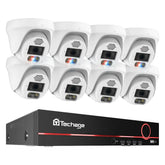
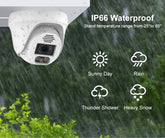








































































































2件のコメント
Dobrý den,
po třech měsících fungování kamerového systému s H.265 8CH POE rekordér Xmeye DVR NVR Podpora 5MP 8MP s 3TB diskem došlo k tomu, že disk přestal fungovat…
Je možné tento disk nahradit diskem SSD?
Děkuji
Dear all,
I have a Techage K4808W and i bought a new 4TB hard drive and it cant format.